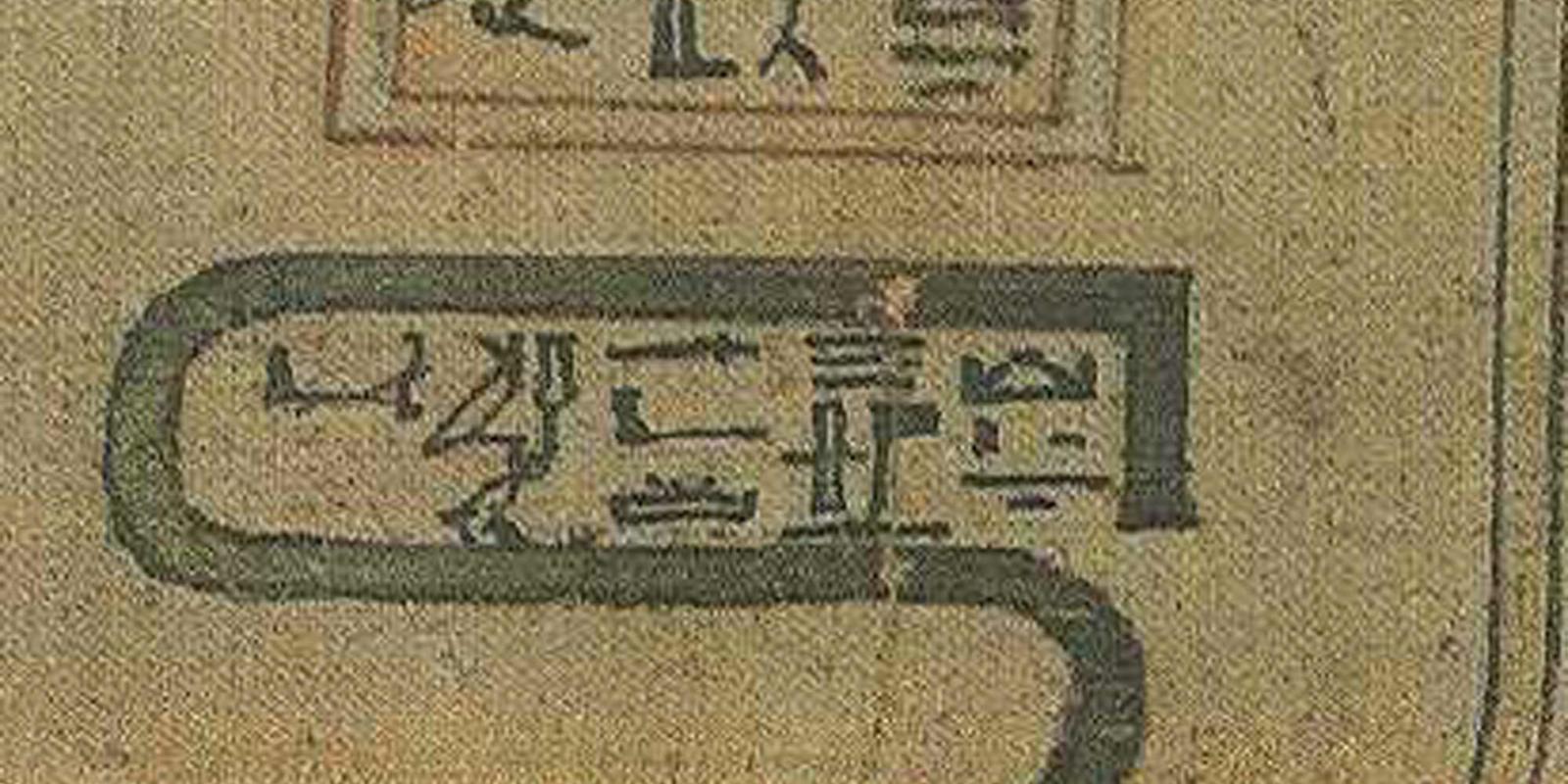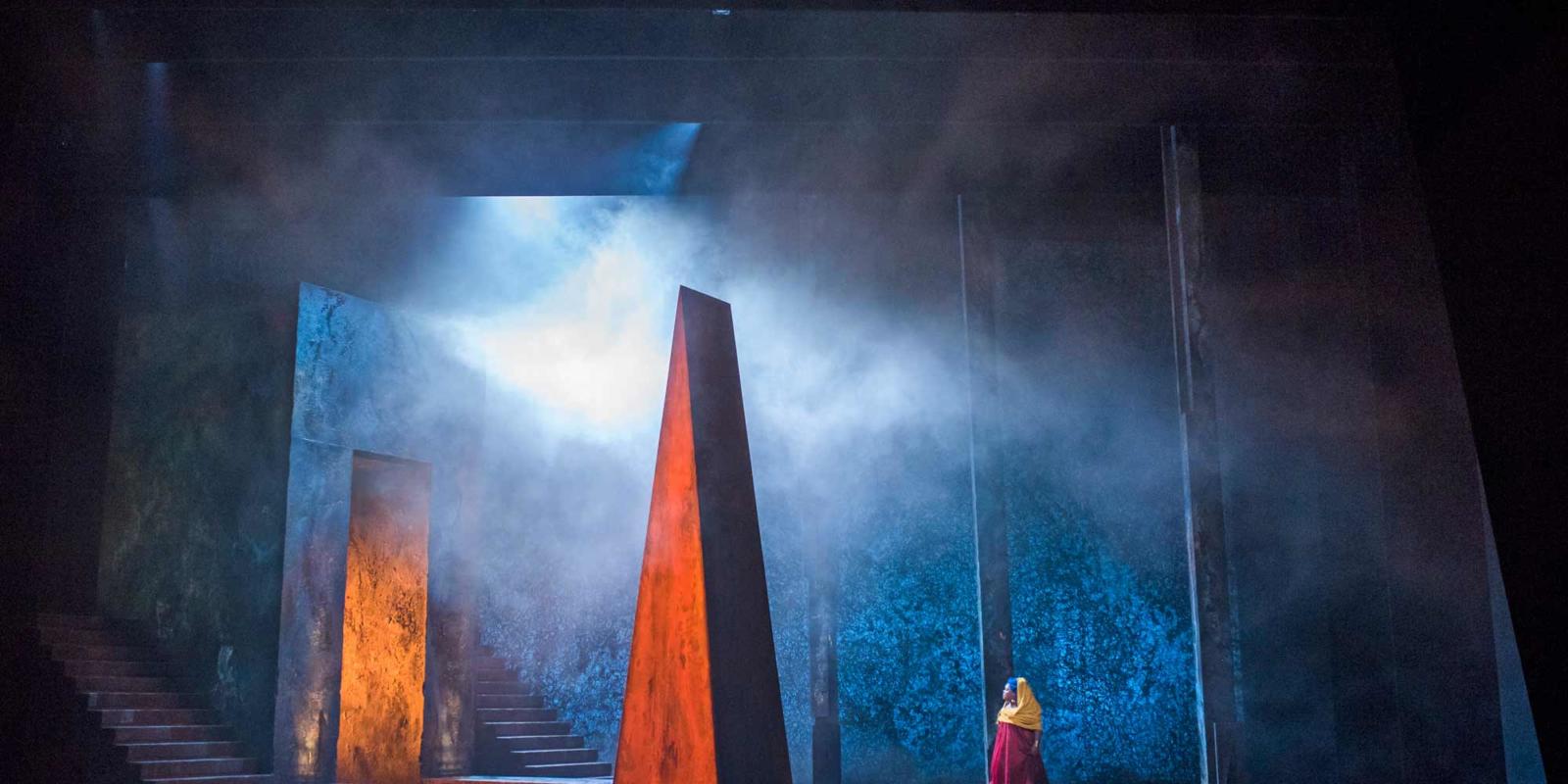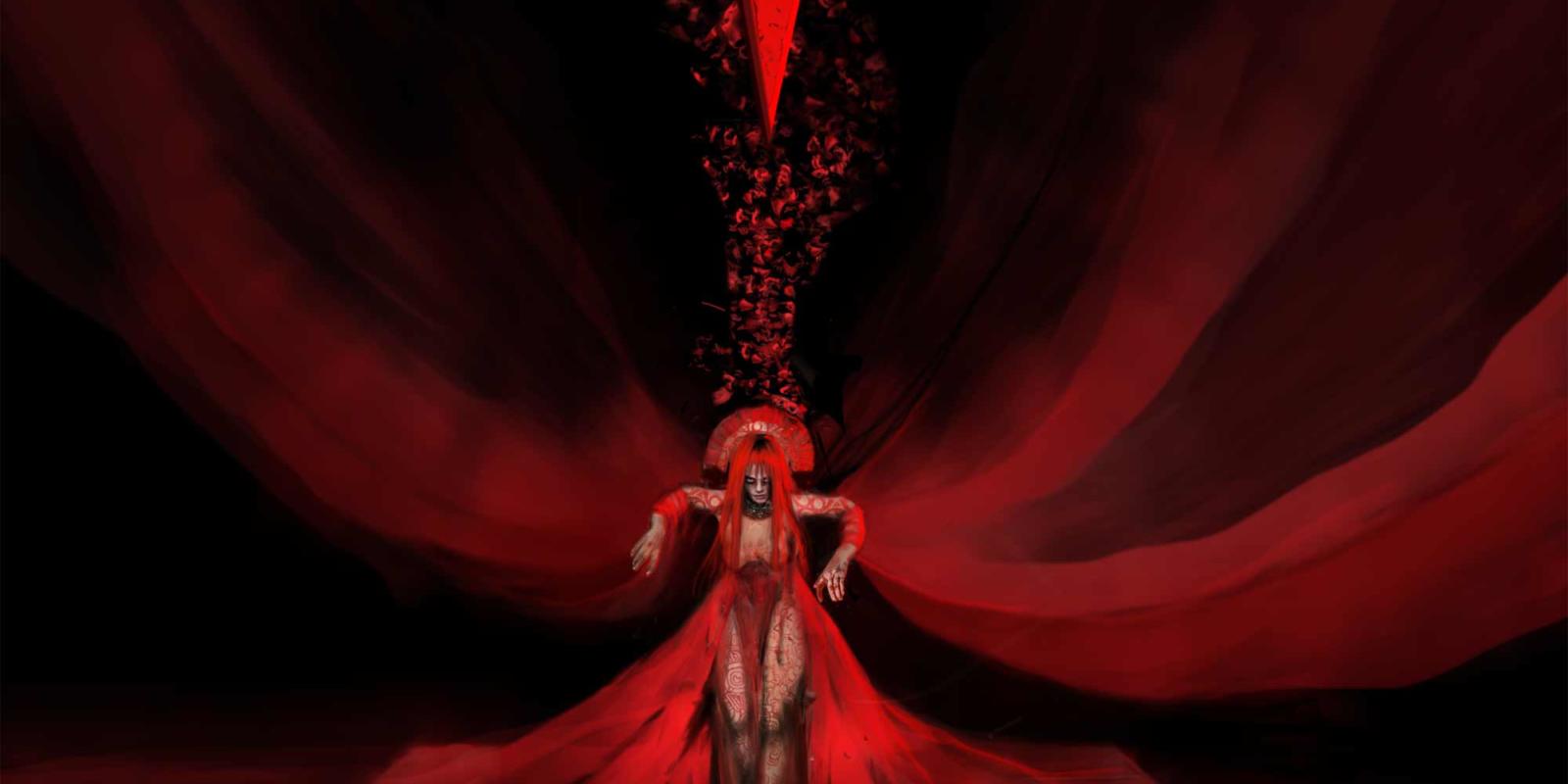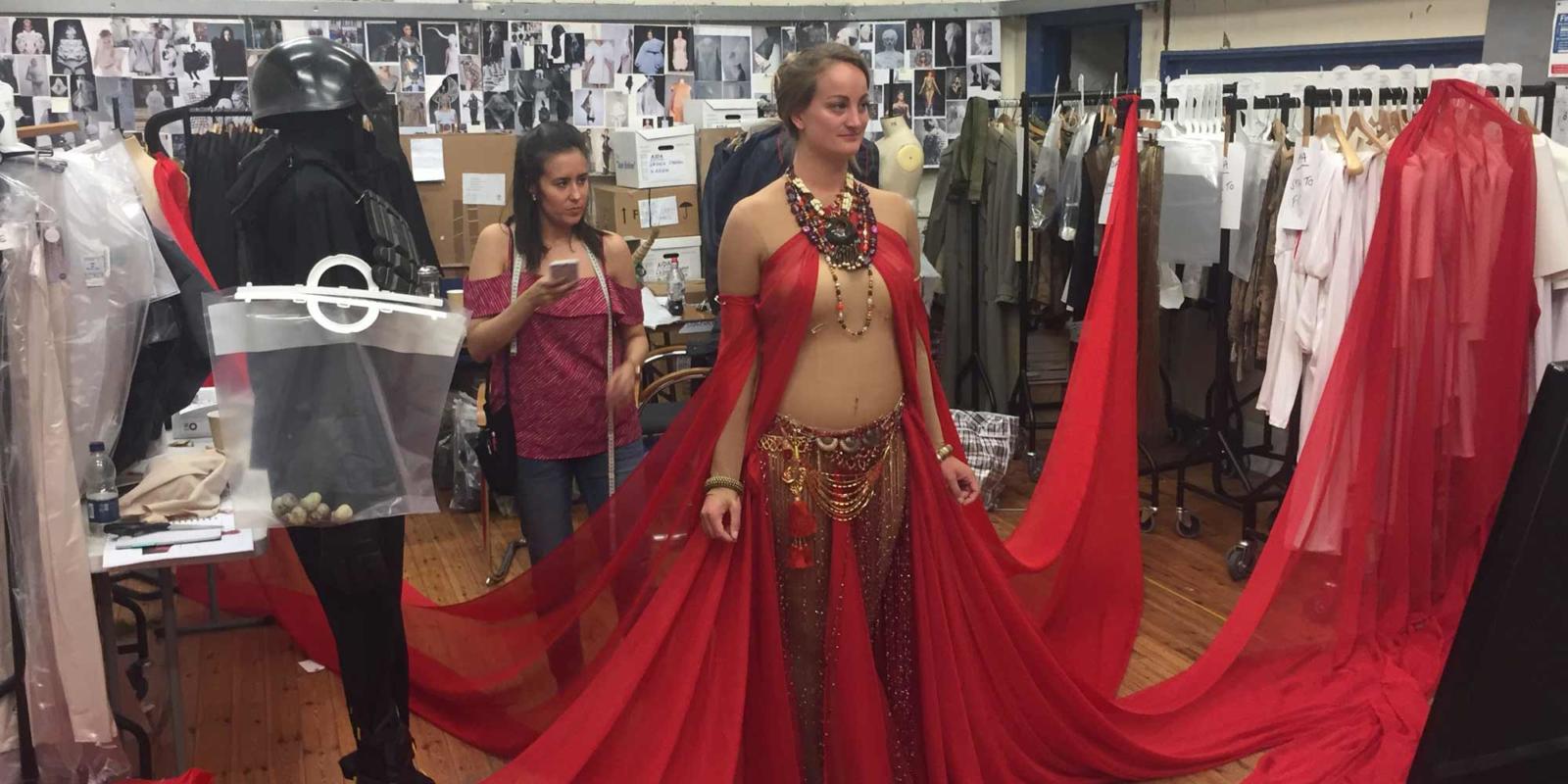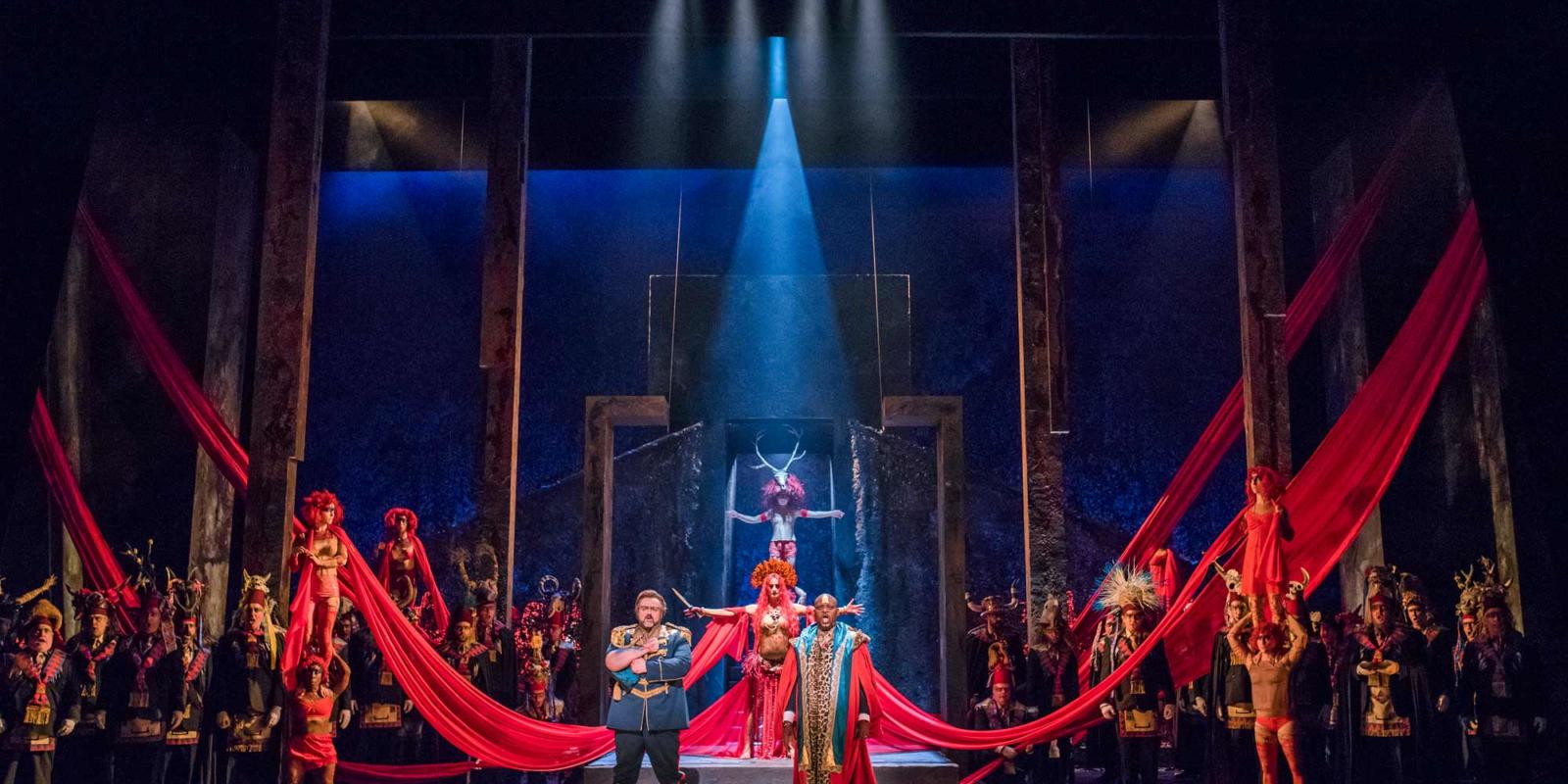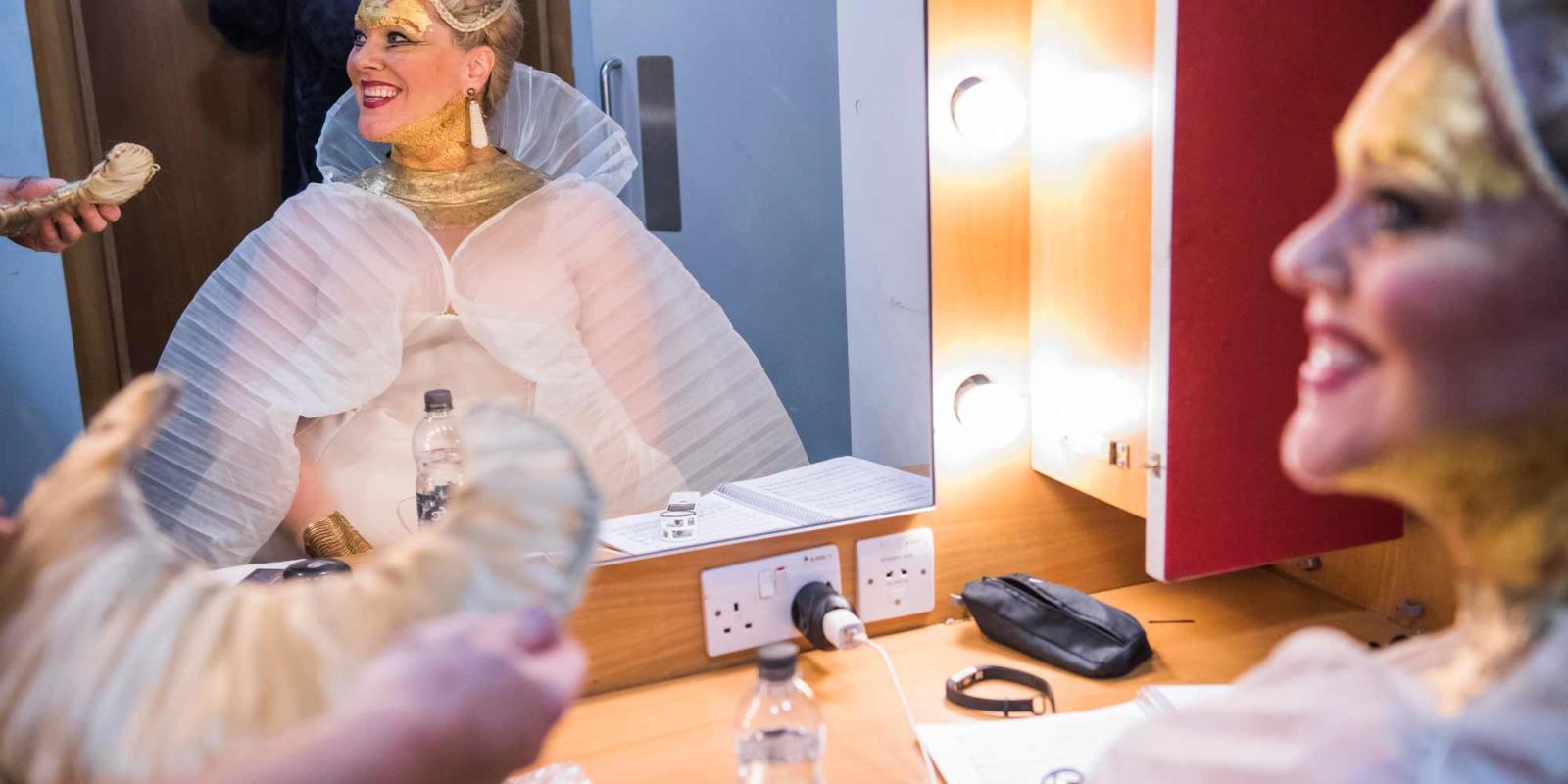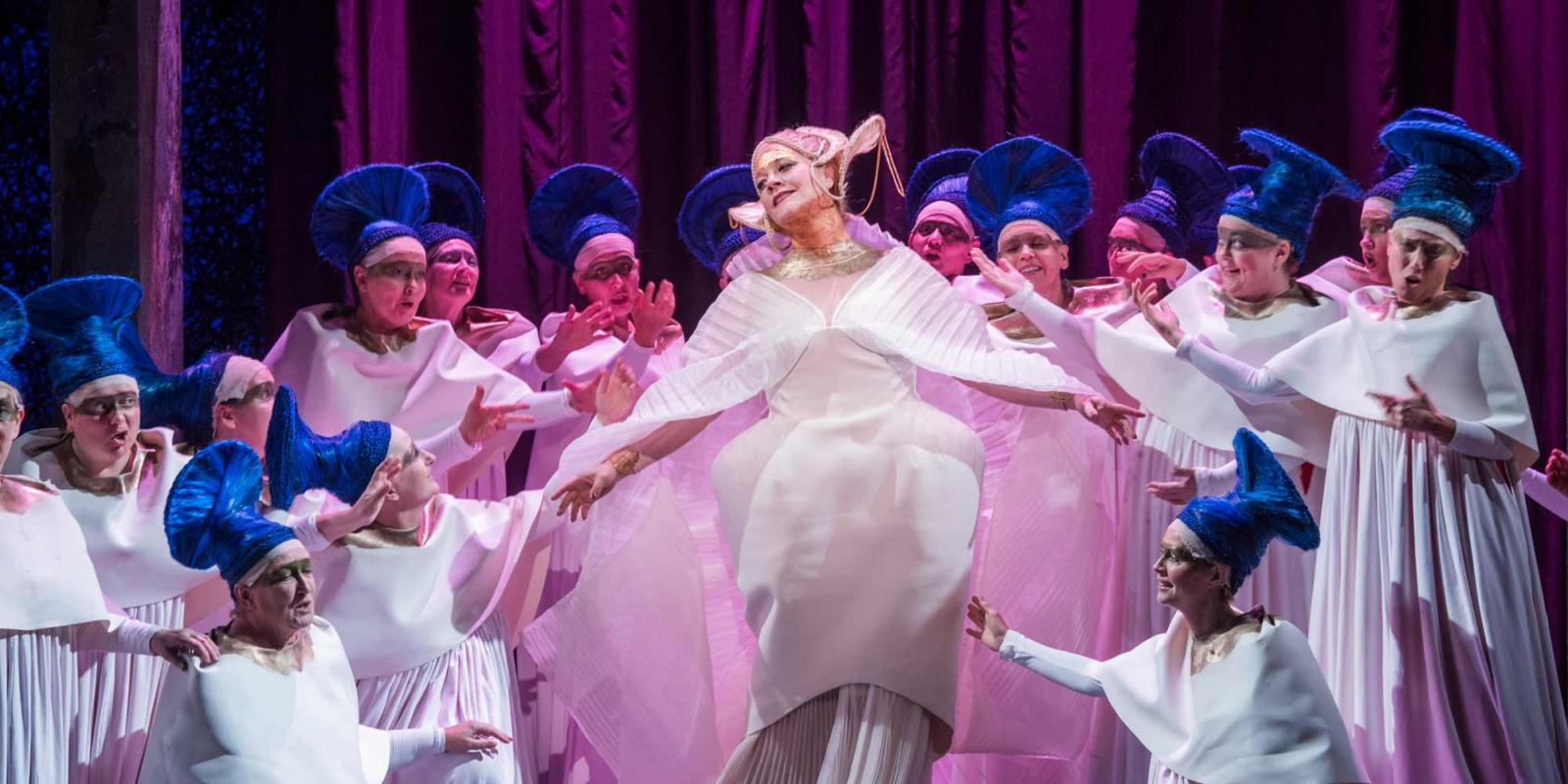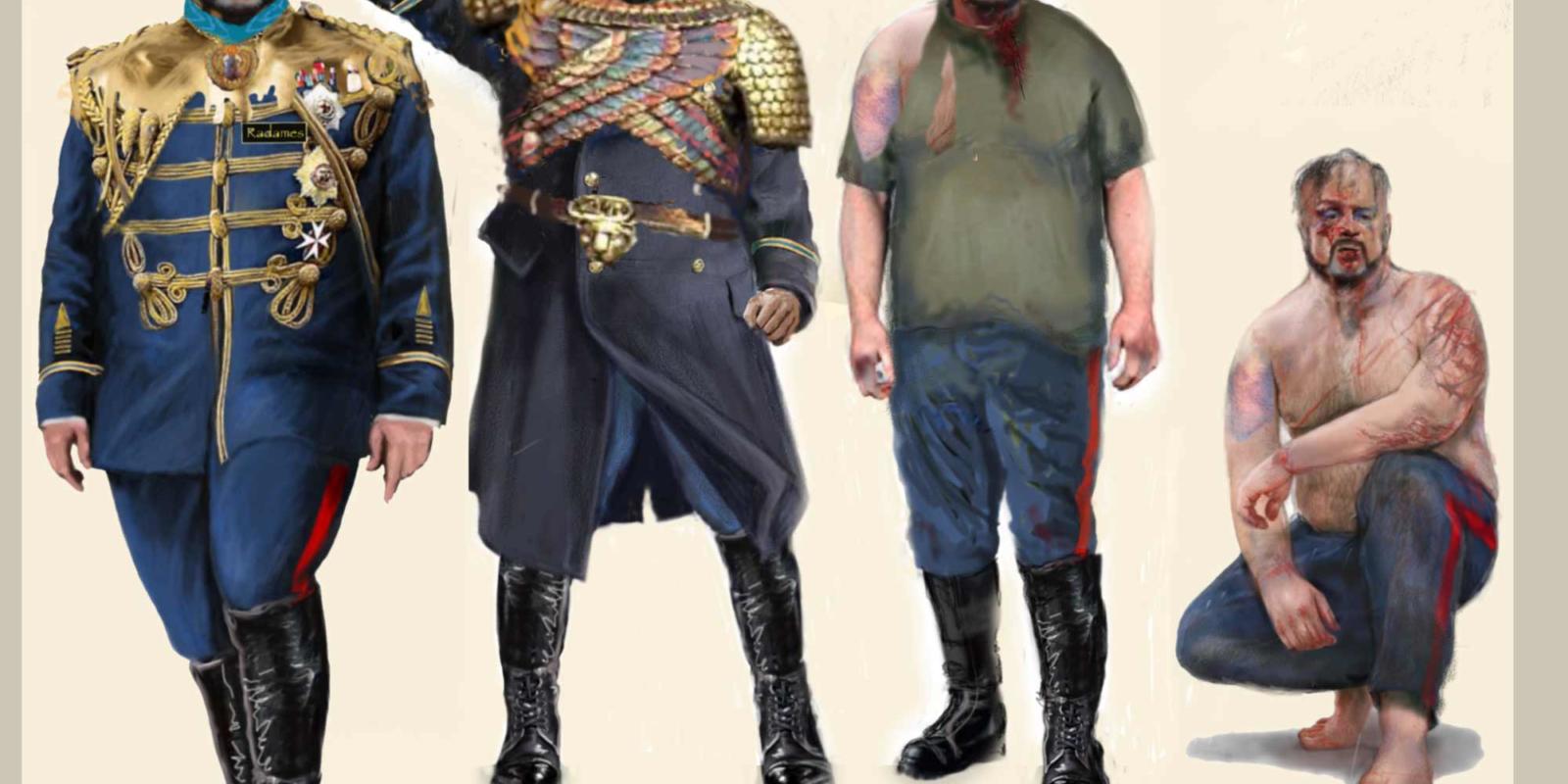The Design
The Set
The set design takes inspiration from images and symbols in the Egyptian Book of the Dead, and builds on some of the ideas that were developed for Akhnaten. Designer Tom Pye’s and director McDermott’s first design inspiration was one Egyptian hieroglyph which they came across when researching Akhnaten. The symbol depicts an obelisk and represents the word ‘gift’. It was reworked into a sleek, minimalist design by Tom Pye and serves as a recurring symbol throughout the set, costume and acrobatic silk work in the production, often combined with a second Book of the Dead symbol: a rectangle representing a tomb. You can chart the evolution of this image in the gallery below.
Tom Pye’s set references Ancient Egypt without a specific time period and seeks to create a sense of timeless space that brings the story into the contemporary world. For much of the opera, large building facades enclose the characters and suggest the strict confines of the Egyptian court. Set elements are painted to evoke a sinister, claustrophobic atmosphere, using rich, dark colours in patterns that drip downwards and resemble oil or filth, seeping into the floor. In contrast, for the realm of the feminine characters in the opera, Phelim, Tom and costume designer Kevin Pollard wanted to reference Ancient Egyptian ritualistic practices where people imbibed herbs and plants such as the Blue Lotus Nymphaea caerule to produce hallucinatory experiences. The domains of Amneris and the priestesses is depicted as a sensuous, hedonistic world with flowing silks in contrasting white and red, with references to the blue flower in the hair pieces, set and costumes worn by the singers and the acrobatic troupe Mimbre.
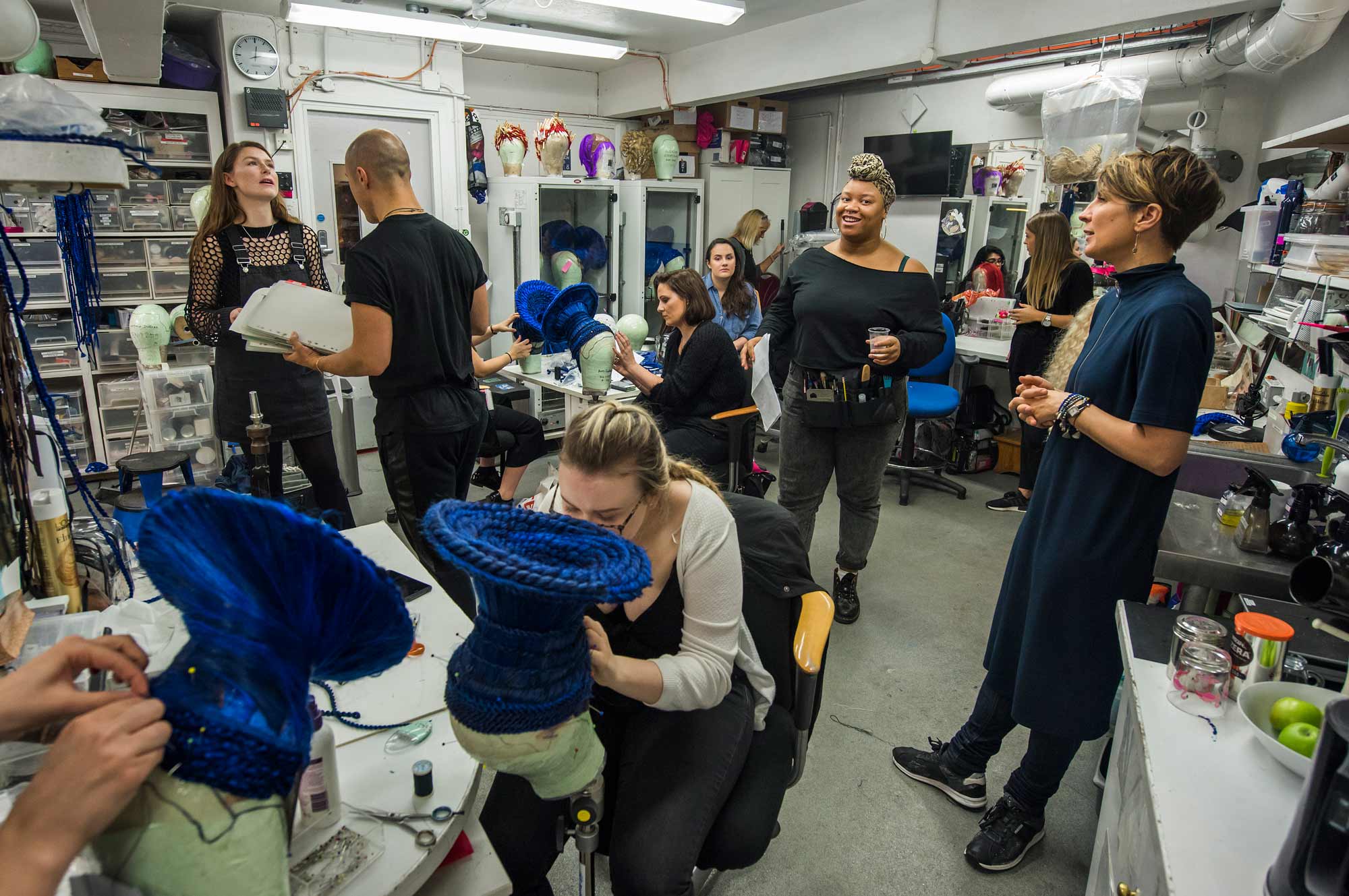
ENO Wigs team adjusting backstage.
Listen to Set Designer Tom Pye and Costume Designer Kevin Pollard discuss their approach to designing Aida, including their design inspiration ranging from Egyptian hieroglyphics to contemporary haute couture, and the process through which costume and set elements are created in collaboration with director Phelim McDermott’s vision to create stunning theatrical effects onstage
The Costumes
An ever-resourceful designer, Kevin Pollard and the team of costume makers at ENO created many of the costumes from existing dead stock, turning dresses inside out or upside down to create radically different looks. Everyday materials including placemats, cable ties, lamp shades and matting underlay were used to develop costumes that blend contemporary high fashion with North African styles. The designs for the character of Amneris, for example, are based on current high fashion trends, emphasising her nobility and high rank in society. In contrast, Aida wears more simple garments that denote her status as a slave but allude to her real identity as an Ethiopian princess in the royal red colours of her tunic. Red is a colour which recurs throughout the opera, alongside Pollard’s recurring use of the blue in the hair pieces for the female chorus and acrobats which references Ancient Egyptian practices of dying hair pieces in these shades. In one of the most theatrical costumes seen in the production, the High Priestess is dressed in red flowing silks during that flow outwards from her dress to represent blood that spills onto the sides of stage to become part of the set, manipulated by the company into flowing rivers. Under these sensuous layers, the Priestess wears a bodysuit etched with scarification, tattoos and symbols in blood – a design created by ENO’s dye department.
Pollard uses head pieces, hair wraps and elaborate hats as well as working with the ENO wigs department to create pieces for several costumes that will create a real sense of scale on stage. Many of these hat pieces reflect Egyptian customs of worshipping gods and sacred animals, or reference the cycles of life and death using flowers or skulls, as seen in the designs for the male chorus of soldiers.
View costume sketches and final stage costumes.

